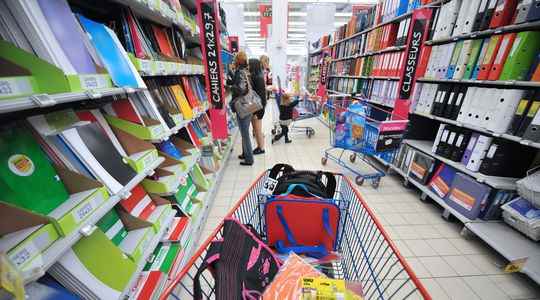Pens, glue, pencils, correctors, notebooks … In an expert report published this Thursday, July 7, the National Agency for National Health and Food Safety (Anses) reveals the presence of several families of dangerous chemical substances in the supplies used at the school, home or office. Inhaled, ingested or in contact with the skin, the chemical substances present in school or office supplies can for some of them cause health effects. This is particularly the case for children who tend to put objects in their mouths.
This survey did not arise by chance. Several studies conducted by the Danish EPA, AdemeI’UFC What To Choose or 60 Million Consumers have highlighted in recent years the presence or emission of chemical substances in these supplies. Several local authorities had also taken the subject head on, such as the city of Grenoble with its “Trouss’Air” project or the Gironde with the “healthy satchel” project. Several environmental labels have also emerged, such as the “European eco-label”, making it possible to distinguish stationery products, pens and other school materials, demonstrating a certain quality and respecting the environment. But no specific legislation is in place to prohibit or regulate the sale of these products.
Allergenic, carcinogenic and repro-toxic
In the viewfinder of ANSES, pens, glues, erasers, markers, pencils, markers and correctors. Seemingly innocuous, these products actually turn out to be carriers of chemical substances that can present more or less serious risks, due to their sometimes allergenic, carcinogenic or repro-toxic nature. And an audience is on the front line: children, who handle these objects all day long at school. “Children are more likely to ‘chew on pens’ or touch their face after coming into contact with chalk or colored pencils, thus exposing children to potentially dangerous chemicals, which can have health effects”, explains thus at L’Express the scientific coordinator of this expertise Céline Dubois. In other words, the risks incurred via the ingestion of these products, but also by inhalation or skin contact are of concern.
ANSES has in fact highlighted in its expert report the presence of a long list of chemical substances that are dangerous to health in school supplies. Among those present in the majority of products analyzed by the agency: phthalates (DEHP) – which have harmful effects on fertility for both men and women, and can lead to embryo malformations in some pregnant women, and increase the risk of fetal mortality -, and volatile organic compounds (VOCs), benzene in the lead – which promote eye irritation, heart problems, nausea and headaches, some of which are carcinogenic or toxic to reproduction.
Think of school supplies as toys
Faced with this observation, ANSES points to flaws in the legislation in force and calls for it to be revised. “Today, school supplies are not subject to any specific regulations,” notes the Agency. Except for certain products, such as coloring markers, glitter glue or colored pencils, all other school supplies are not included in European regulations of 2009, which ensures “a high level of protection of children against the risks caused by dangerous chemical substances present in toys”, whether they are “allergenic” substances or “carcinogenic”, “mutagenic” or “toxic” substances “. The vast majority of school supplies are not covered by this regulation, and therefore suffer, according to ANSES, from a “protection deficit”. Indeed, at present, products such as pens, erasers, notebooks, markers or correctors are not controlled at such a high level, and are only encompassed by the European REACH regulation of 2006which has a more limited scope.
At the end of the 70 pages of expertise that it publishes this Thursday, July 7, ANSES calls for the inclusion of all school supplies in the “toys” category. Such a change in legislation should make it possible, according to Céline Dubois, “to guarantee a high level of protection for children – but also for adults – against the numerous chemical substances present today in a certain number of objects which they use in the daily”. The European alert system for dangerous non-food products, called Safety Gate, has identified around fifty alerts since 2004 concerning stationery, 96 concerning glue, and 72 for school products already considered legally like toys. A number considered relatively low by experts, but the recurrence of which is cause for concern as to the safety of the items placed on the market.
